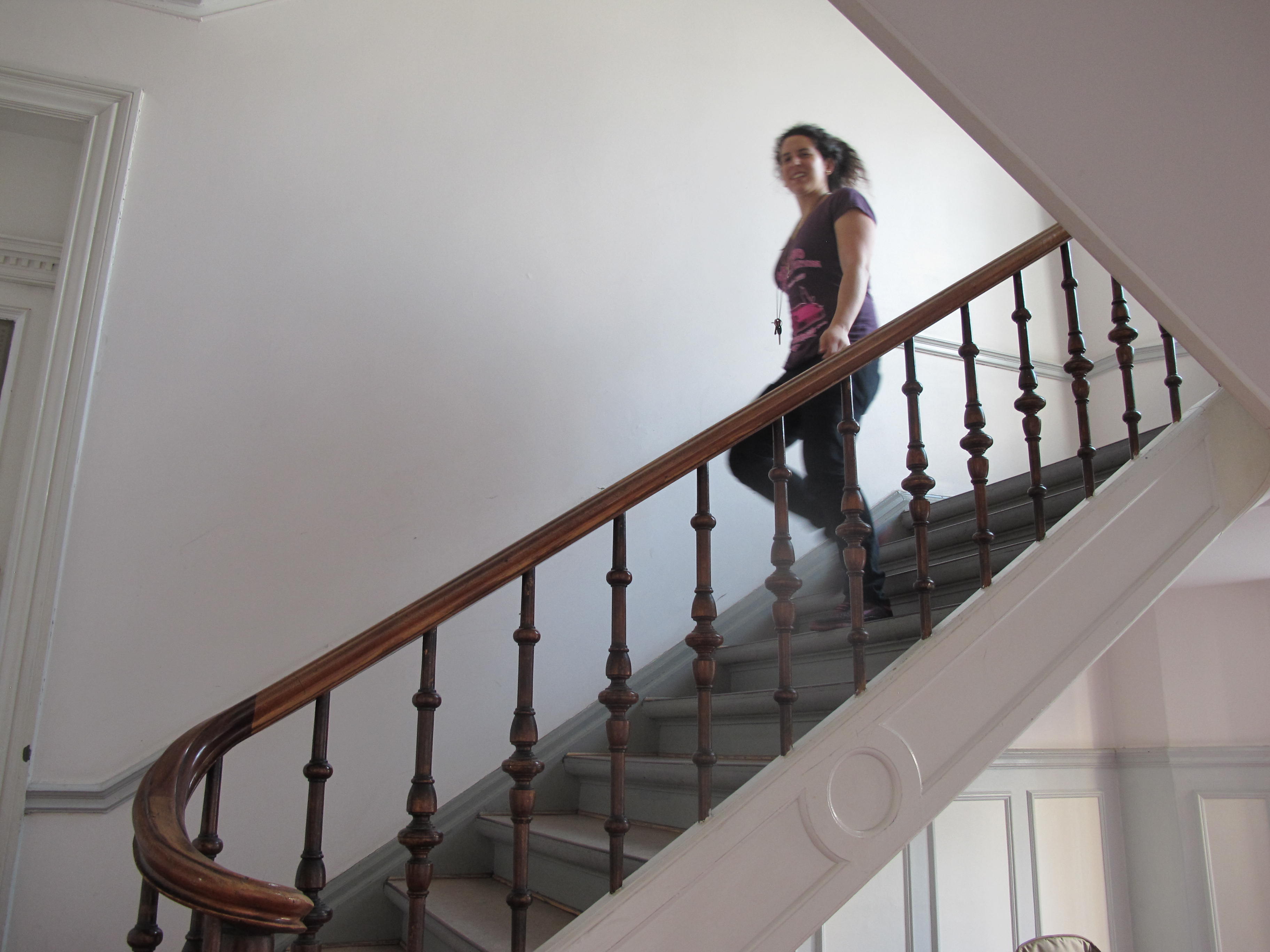Archive for August, 2013
FUELING INNOVATION THROUGH SHARED TECHNOLOGY
Fueling Innovation Through Shared Technology
-
AUTHOR: Gabriella Levine // CATEGORY: 2013 Event, Blog, Guest, Program, Speakers
Aug
 INNOVATING BASED ON MODELS
INNOVATING BASED ON MODELSTechnology has always been innovated based on other people’s successes, from the discovery that the earth was round, to the invention of the telephone, steam engine, or airplane. And scientists have found resources in biological systems for technological innovations, for example the development of VELCRO modeled after a Burr plant, or SONAR inspired by the echolocation in bats.
OPEN HARDWARE MOVEMENT
 Although patent laws were originally designed to protect inventors’ ideas, patents constrain further innovation. The more that designs and processes can be open and shared, the quicker that innovation can happen.
Although patent laws were originally designed to protect inventors’ ideas, patents constrain further innovation. The more that designs and processes can be open and shared, the quicker that innovation can happen.There are many examples of successful businesses openly sharing software, such as Mozilla and Linux, but the rise of the Open Hardware trend is just beginning. The Open Hardware definition[1] states that it is any hardware whose documentation is made publicly available for others to use, modify, and distribute. This growing trend is founded in the belief that sharing ideas, designs, and methodologies can bring technological innovation and manufacturing mainstream on local and global scales, making it easier to engineer new solutions to complex problems.

Open Hardware projects that facilitate free sharing of documentation, source code, and CAD designs, are an approach to proliferate innovation. Arduino, a platform developed for hobbyists to make electronic prototypes, has expanded the world of hardware development from electrical engineers to artists, hobbyists, and even youth. Open Hardware projects range from industrial machines [open source ecology], 3d printers [RepRap], environmental disaster relief efforts [Protei, Open Relief], and underwater robotics [openROV].
STEALING INFORMATION
As modern technology and the Internet dissolves boundaries between countries and people, even expensive information is getting easier to steal. Evidence of this can be seen from the recent rise of industrial espionage by mostly Chinese University students gaining access into US University and Library material. The recent NY Times Article on the rise of Cyberattacks [2] cites Bill Mellon of the University of Wisconsin saying, “We get 90,000 to 100,000 attempts per day, from China alone, to penetrate our system”.
China is a special mecca for hackers. Companies employ hackers to spy on competitors’ trade secrets, and Chinese universities partner with corporations to sponsor hacking competitions that army talent scouts attend. China’s rapidly accelerating economic growth and extreme rate of production, as well as the immense pressure to publish research papers explains the intensity of cyber-hacking in academics and business. For instance, 31% of the publications Journal of Zhejiang University–Science were deemed to be plagiarized[3], .
SHANZHAI
 A very interesting trend has sprouted from China’s copycat culture, called Shanzhai, literally meaning “Mountain Fortress”[4]. Shanzhai refers to a cluster of about 300 “underground” factories tucked away in the mountains of Shenzhen, China. These factories rapidly produce cheap knock off consumer electronics such as watches and iPhones. Brand names include NOKLA (Nokia knockoffs) and Hi-Phone (iPhone copycats). Although quite secretive and hard to access, Shanzhai is not a small operation: by 2010, Shanzhai cell phones took 20% of the 2G market[5].
A very interesting trend has sprouted from China’s copycat culture, called Shanzhai, literally meaning “Mountain Fortress”[4]. Shanzhai refers to a cluster of about 300 “underground” factories tucked away in the mountains of Shenzhen, China. These factories rapidly produce cheap knock off consumer electronics such as watches and iPhones. Brand names include NOKLA (Nokia knockoffs) and Hi-Phone (iPhone copycats). Although quite secretive and hard to access, Shanzhai is not a small operation: by 2010, Shanzhai cell phones took 20% of the 2G market[5].SHANZHAI and OPEN HARDWARE
There are many similarities between Shanzhai and the Open Hardware community. Both Shanzhai and Open Hardware projects borrow information, tools, source code, CAD files, and techniques; both improve upon other’s work to accelerate development.
What differentiates Shanzhai from Open Hardware projects is that it doesn’t build upon the work of others for increased innovation, but it exactly copies it and prices it lower.
BORROWING FROM NATURE : OPEN SOURCING BIOLOGY

Not only does technology proliferate by building upon the innovation of others, but drawing inspiration from biological processes has also refined technological innovation. In contemporary times of extreme technological advancement, social infrastructures (Facebook, Google, Yahoo) are built upon sourcing individual data to inform collective intelligence. Redesigning urban frameworks for efficient transit options is becoming increasingly critical due to growing urban populations. Therefore, looking to biology for influence for organizing emergent intelligent systems is increasingly crucial for design considerations.
Biomimicry as used in design and engineering takes the form of copying a form and function (like the use of a fin for swimming), modeling principles occurring in nature (such as aerodynamics for flight), or mimicking organizational principles (modeling online social networks on ant colonies). A pivotal example of biomimetic design is the experimental IBM computer chip, released in 2011, that emulates the human brain’s cognition.
Using complex yet efficient biological systems as a model and a mentor for design and engineering solutions parallels the way that Open Hardware projects can increase innovation potential through building upon effective past work.
EXPLORING BIOMIMETIC DESIGN: BIOMIMICRY AND OPEN TECHNOLOGY IN ACTION
I just returned from teaching a 2 week course at CIID (Copenhagen Institute of Interaction Design)[6] in Denmark. With the use of open source electronics boards and modular code libraries shared online through open source communities (such as Adafruit, Sparkfun, and DIYDrones), the students’ projects were able to reach great levels of sophistication, conceptually and technologically, in a short amount of time.

City Pulse, a final project in the summer course, a data-driven real-time interactive projection based on the people’s motion
This rapid innovation is possible when communities and individuals willingly donate R&D online, making available modular code libraries and hardware toolkits for affordable prices. Through open source sensor distributors, like Sparkfun and Adafruit, the prices of the sensors, (ie for temperature, humidity, acceleration, barometric pressure) are super affordable ($10 – $30USD). In just two weeks, people who had never built electronic circuits, never programmed a microcontroller in the programming language C, or never made real-time interactive computer graphics, were able to map their bike routes with GPS sensors, 3D-print prototypes to manufacture, develop a system for bacteria to harness energy based on people’s twitter feeds, design reactive screen based projections based on sensor data from people’s motion, and prototype robots to collect trash.
Explore more about the class here.
Sources Cited:
[1]http://freedomdefined.org/OSHW
[2]http://www.nytimes.com/2013/07/17/education/barrage-of-cyberattacks-challenges-campus-culture.html
[3]http://www.nytimes.com/2013/05/23/world/asia/in-china-hacking-has-widespread-acceptance.html
[4] http://patterns.ideo.com/issue/shanzhai/
[5] http://uk.finance.yahoo.com/news/bandit-phone-king-has-the-last-laugh-ftimes-34bef9cc11fc.html
[6] http://ciid.dk/education/summer-school/ciid-summer-school-2013/biomimetic-interfaces/
Teaching at CIID Summer Course 2013: Exploring Biomimetic Interfaces
I just returned from teaching a 2 week summer session course at CIID
It is an amazing place. And it was an intense and fantastic 2 weeks. It was a mix of Human – Based Design Thinking, Biomimetic practices, Programming, creative ideas, interactivity, and stacks of Arduinos. To see some of the course work see this site.
We arrived the first day:  and went to the school.
and went to the school.
We explored the lab and the equipment. They have a VERSA laser cutter, 3d printer, electronics bench, a woodshop, and a lot of spare materials.



From there we head to the apartment and wandered the stairs until we were able to find the right apartment 
We got our bikes!
And the course began

The first day of class:
Design Challenge: raft lanterns


Design Thinking Crash Course : redesign the playground



Day 2: Arduino Intro and lab #1. hardcore hands on.
And assignment #1: Design solution from the perspective of a non human user



By day 3 already, we were planning for the final project and doing some analog user testing:



and analog fabrication, building, designing, planting, creating, conceiving, etc
AND A LOT OF WORK, late night wine, and planning:

and some picnics and some drinks:



Finally the weekend came. We biked to Louisiana to see Tara Donovan.





Then the work resumed, as the week started back up.




lots of late night work [it only doesn’t look dark because it got dark aroundplay 10:30 because of the long days]:



and a computer disaster disconnecting Genevieve from the rest of the world:


and a field trip to labitat:



And a long week later:
projects and presentations
METADATA : Exemplifying that unwillingly, we are all contributing to Metadata’s collection, but that can either be percieved positive or negative
THE ANTS PROJECT : encouraging recycling based on a point system modeled after ant behaviour
BIIKE – a gps tracker and data logging system to encourage biking in cities
ANTHILL – bringing sharing to mainstream with intelligent share stations setup in local supermarkets
SYMBO – a biomimetic flying trash collecting drone
CITY PULSE – Urban Data and energy contributing both to information aggregation as well as public art and compelling visualisations
And the presentations:
And FINALLY after an intense and sleepless week, the barbeque of celebration.




































Comments
0 Responses to Fueling Innovation Through Shared Technology